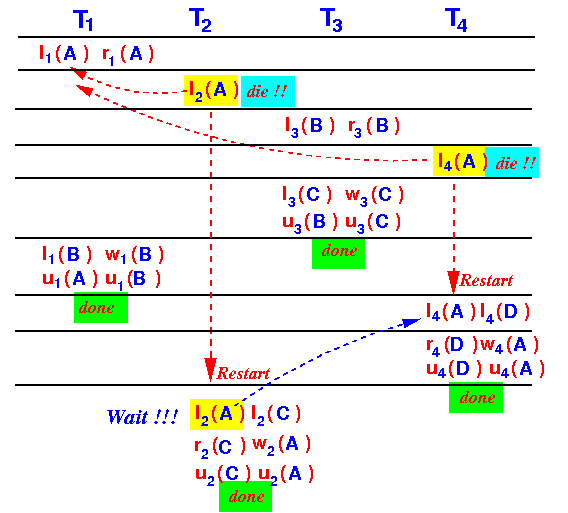- Timestamped transactions:
- Each transaction is
assigned a
unique
increasing timestamp:
- T1, T2, T3, ...
- Important fact:
- An earlier transactions receives a smaller timestamp
- Each transaction is
assigned a
unique
increasing timestamp:
- Purpose of
the time stamp:
- To give older transactions (= transactions with smaller timestamps) a higher priority over "younger" transactions
- The
Wait-die
locking rule:
- When an
older transaction
tries to lock a DB element
that
has been locked by
a younger transaction:
- The older transaction will wait until the lock is released (by the younger transaction)
- When a
younger transaction
tries to lock a DB element
that
has been locked by
a older transaction:
- The younger transaction will die (= abort)
Graphically:

- When an
older transaction
tries to lock a DB element
that
has been locked by
a younger transaction:
- The wait-die
rule will
prevent the
development of
deadlock
because:
- Tn
cannot wait for
T1:

So there cannot be a cycle in the wait-for graph:
- No deadlock possible !!!
- Tn
cannot wait for
T1:
- Transactions:

- Example execution
that obeys the
wait-die rule:

- Important note:
- When a transaction
is aborted and
restarts:
- The transaction will retain its (old) transaction timestamp !!!
- Therefore:
- Eventually, a transaction will become the "oldest" transaction and will complete execution !!!
- When a transaction
is aborted and
restarts: